Tom Sweeney lifts the lid on what it’s like to be an elite tennis chair umpire
Tom Sweeney has reached the highest rank in international tennis umpiring since “helping out” at a tournament aged 16, with the lure of a free lunch. He reveals what it takes to officiate the sport’s biggest names.
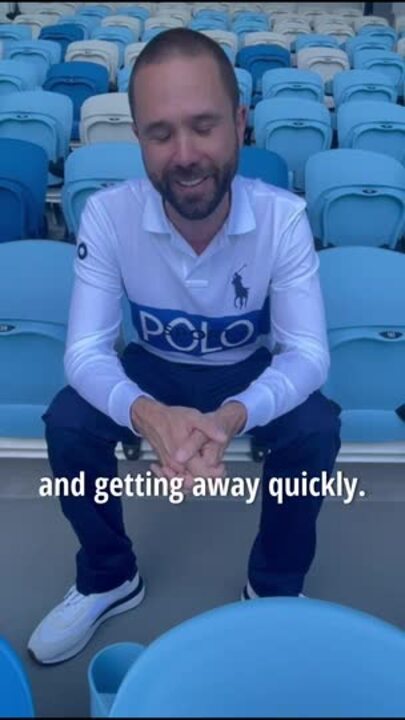
News
Don't miss out on the headlines from News. Followed categories will be added to My News.
Sitting high above centre court as Aryna Sabalenka and Elena Rybakina fought out a tight Australian Open final in 2023 was a pinch-me moment for Tom Sweeney.
The man who stumbled into tennis umpiring at age 16 in his hometown of Benalla, in northeast Victoria, was officiating the biggest match of his unexpected career – and feeling an overwhelming sense of pride.
Being in the chair for a Grand Slam singles final had been a goal of Sweeney’s since he began working his way up the ranks to the highest level one can obtain on the international circuit: a gold-badge chair umpire.
Sweeney became just the eighth Australian in history to earn this status late in 2022. He joined John Blom as the only other Aussie currently in the role, which is held by a total of 35 people worldwide at a time.
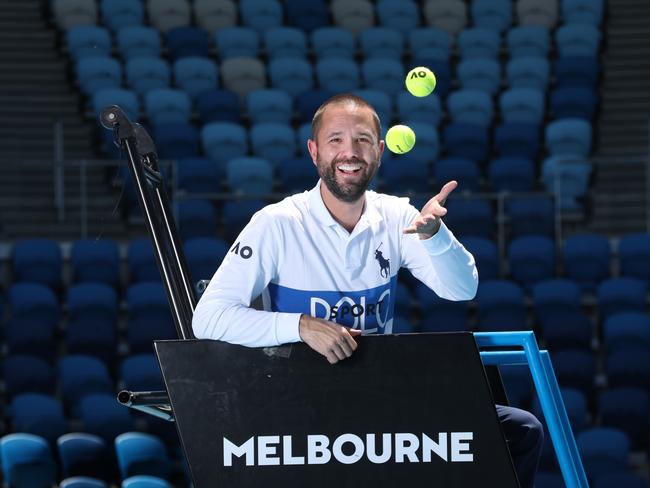
“Getting promoted to that gold-badge level opens up the chance to work deeper into the world’s largest tournaments, work the finals and potentially do those high-profile matches on the bigger courts,” the 39-year-old says.
“It was a personal goal of mine to obtain that gold badge. It was also a goal to one day do a singles’ final in Melbourne.
“So that’s the biggest match that I have done, the 2023 women’s singles final between Sabalenka and Rybakina. It was a great final.”
For those who don’t recall, Sabalenka came back from a set down to topple her Kazakhstani rival and win her first ever Grand Slam title 4-6, 6-3, 6-4.
January’s Australian Open will be the 23rd Sweeney has officiated, either in the chair or as a line umpire, and his 55th Grand Slam. He has also worked at three Olympics – Rio, Tokyo and Paris – and Paralympics, Commonwealth Games and Davis and Fed Cup ties.
Sweeney has officiated all of the world’s top players across the men’s and women’s tours at some point, although he can’t be drawn on too many names.
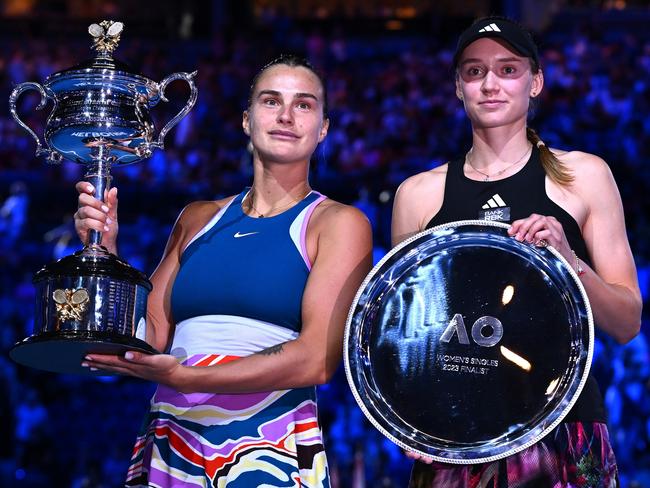
For a sports fan, it’s a dream gig. But the role comes with both perks and challenges – most of which aren’t mutually exclusive.
Melbourne-based Sweeney is on the road for about 22 weeks each year, enduring long-haul flights, uncomfortable hotel beds, living out of a suitcase, laundromats and a lack of home-cooked meals – but also visiting places he never expected.
His first trip overseas came about due to tennis when he travelled to Delhi, India, to complete umpiring “school” to obtain his bronze-badge qualification in 2010. He has since officiated in 80 countries across six continents.
“Tennis has been an avenue to explore the world and perhaps understand it a bit better,” Sweeney says.
“Part of the excitement of doing this job is meeting people from around the world and creating friendships that make visiting their countries extra special.
“I did a Davis Cup week in Tehran, Iran, which was a country I would never have had the opportunity to visit otherwise.
“The locals were so welcoming – everyone you passed wanted to invite you in for a cup of tea and ask you how much you were enjoying your experience.”
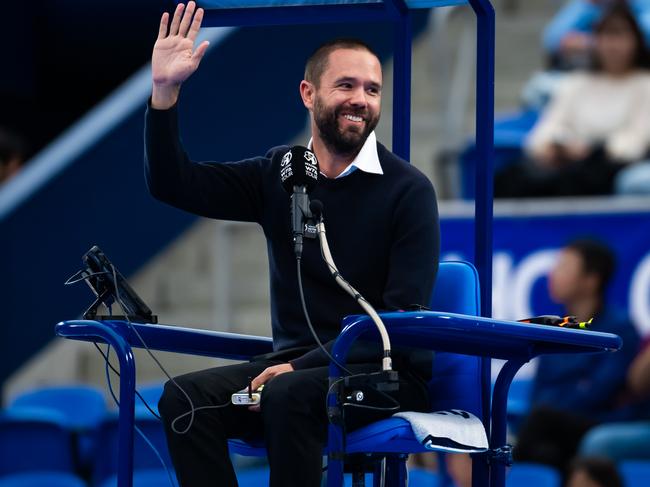
Sweeney was a sports-mad kid, playing footy and cricket on weekends and glued to the tennis when it was televised each January, having been indoctrinated by his mum and grandfather – “both big tennis fans”.
So at age 16, when the president of his local tennis club in Benalla asked him if he could “help out for the day” at a tournament as a line umpire, he agreed. The president threw in a sweetener, Sweeney recalls: “He said he’d buy me a sandwich for lunch.”
He adds: “Cricket had finished early that season, I guess we hadn’t made the finals. So I was available to be a line umpire, which I instantly found quite easy because in cricket juniors, I was a wicketkeeper where I had the ball coming towards me and had to catch it. As a tennis line umpire, all I had to do was see it bounce and decide if it was in or out.
“I found it sort of a natural transfer of skills and if anything, a bit easier, because I didn’t have to catch the ball.”
Sweeney looks back on that weekend as “a sliding doors moment”. The following summer, at age 17, he began line umpiring at the Australian Open. He says this was a thrill for “a country kid, getting to come down to the city and have a big adventure” – and a much more exciting summer job than his mates who were working at the local supermarket.
Getting the role took dedication. Sweeney’s mum would regularly drive him about two-and-a-half hours from Benalla to Melbourne for training, which initially involved honing his skills at under-12 competitions.
“You’re learning the particular techniques and rules and concentration required (to be a line umpire) on those training days,” he recalls. “You take baby steps to work your way up from there, to local tennis days to national tennis days, and then finally, to the professional levels.”
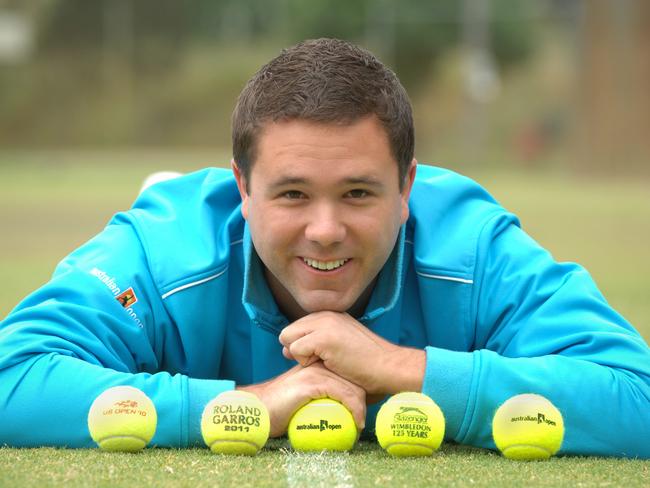
After a few summers of line umpiring at the AO, the opportunity to train as a chair umpire emerged. Sweeney jumped at it and “instantly fell in love”.
“I found it to be a much more enjoyable challenge,” he says. “And the time passed much faster – you could be working a five-hour match and not realise it’s been so long because you’re so focused on the job at hand.”
Sweeney is now at “the top of the pyramid for chair umpires”, having progressed through the stages of white badge (held by about 1000 people worldwide), bronze (a couple of hundred people) and silver (about 50) to gold (just 35).
To achieve his white and bronze badges, Tennis Australia had to apply for Sweeney to attend “international schools” that could be held anywhere in the world, where you are tested across four to five intense days both in the classroom and on the court.
Sweeney’s white badge school was conveniently in Melbourne and his bronze, in Delhi. “Then, going from bronze to silver and silver to gold are end-of-year promotions based on evaluation of your performance throughout the year,” he says.
Being able to maintain laser-like focus for sustained periods is a key skill required by chair umpires. “Part of that is being able to rise and fall with the match,” Sweeney says. “For example, taking micro-breaks at change of ends or between points so that you’re back to 100 per cent concentration once the ball’s in play.”
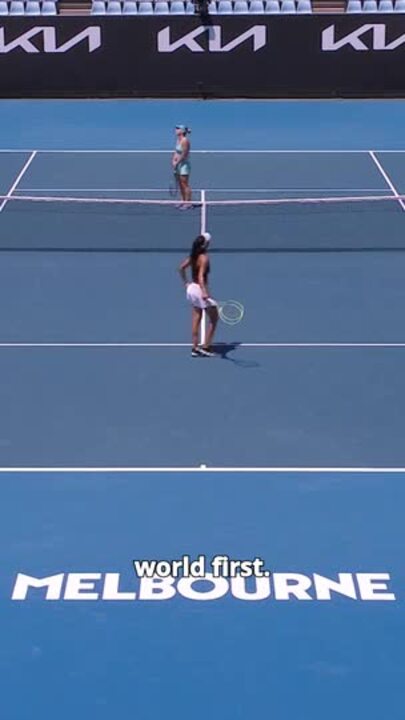
Having a strong awareness of what’s happening around you, to the point where you are “noticing things no one else has noticed so you’re fixing problems before they even occur” is also important to ensure a match runs smoothly.
The ability to communicate effectively – with players, ballkids and the crowd – and in-depth knowledge of the rules of tennis round out Sweeney’s top responsibilities.
“Through experience, you learn what particular things each player is looking for in an official – some may prefer not to be spoken to, others may use the chair umpire to vent their frustrations (or) bounce off throughout the match. Some players just like to talk,” he says.
“And when you have 15,000 people on Rod Laver Arena, they need to be managed in a way that they get to have fun and enjoy the match, but that they don’t become a burden on the match.
“Rules knowledge is one of the most important aspects of our role because, when a situation happens on court, we’re not given the opportunity to open a 600-page rule book, flick to the correct page and quote the rule.
“We need to be consistently reading and updating ourselves on the rules and regulations (so we can) draw on the correct rules application in a millisecond.”
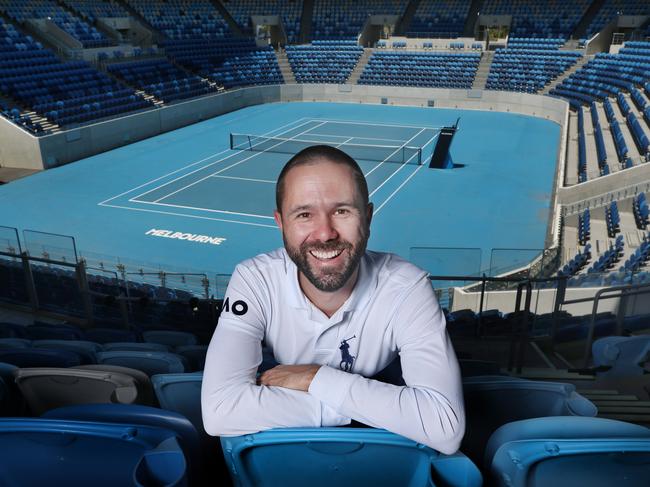
Chair umpiring is a full-time job for Sweeney. His year begins in Australia, officiating AO lead-in tournaments like the United Cup or Adelaide International and then his home Grand Slam.
“Then the tour moves to the United States in March, with larger tournaments like Indian Wells and Miami,” he says. “We have the larger clay courts events in April and May in Madrid and Rome.
“And then my favourite time of year, the UK grass court season with the events like Queens, Eastbourne and finishing with Wimbledon.
“Primarily for the rest of the year, I work for the WTA (Women’s Tennis Association) tour. They assign me to their tournaments – the most recent in Beijing in October.”
When Sweeney is in Melbourne, his focus shifts to administration work and educating younger officials, to help ensure Australia’s tennis umpiring stocks are in good shape.
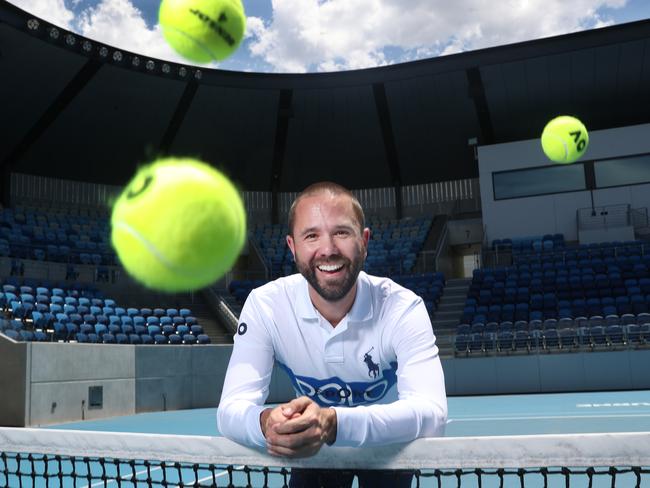
He describes the tennis community he is part of as “a bit of a travelling circus” – and that’s just the way he likes it.
“You see the same faces everywhere you go, create bonds and they become your own family on the road,” he says.
He also loves how the job necessitates a need to be “always learning and improving”, while also arming you with the skills to “become a better person”.
“It gives the ability to focus on a task at hand, problem solve on the spot and communicate with people while they are feeling frustrated or feeling pressure,” he says. “Every situation can bring forth a new problem to solve and when things go well, it’s a rewarding feeling.
“That’s why we keep pushing to do our best, and to provide an environment where the players can just focus on what they’re doing and play a great match.”
AO Opening Week, presented by the Herald Sun, will feature charity matches, Australian Open qualifying, open practice, Kids Tennis Day and new events 1 Point Slam and Red Bull Bassline at Melbourne Park from January 6-11. Tickets start at $15 for adults and $10 for kids. The Australian Open main tournament is from January 12-26.
TENNIS CHAIR UMPIRE TOM SWEENEY ON …
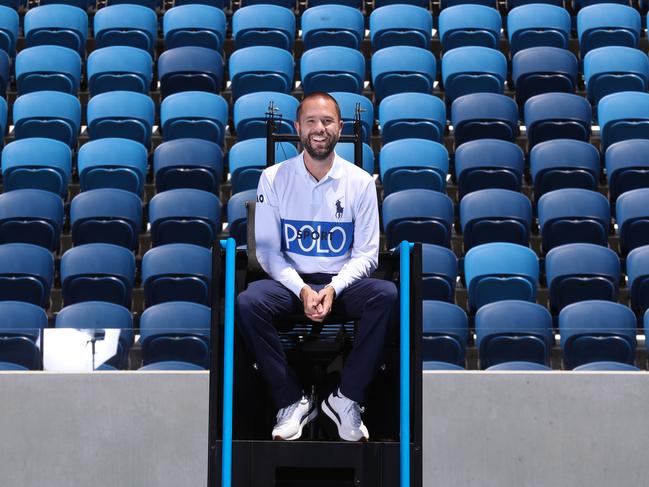
Standout matches he has officiated
The 2023 women’s singles final between Aryna Sabalenka and Elena Rybakina (right). It was a great final. That along with an additional eight doubles finals that I’ve done at the Australian Open. It’s a privilege that world tennis comes to Melbourne once a year, that it’s in our backyard with the whole world’s attention on us. It was a goal to be a chair umpire on centre court at Wimbledon, and that was an incredible experience to do for the first time. (As were) the Olympics in Paris. The stadiums were full for every match. There’s a special element to the Olympics because, rather than fans watching an individual play, they see the person representing their nation, so the passion hits another level.
The longest match he has officiated
At the Australian Open between Ivo Karlović (of Croatia) and Horacio Zeballos (of Argentina), which went to five sets back in the days where the match could go for an infinite amount of time (in 2017). That match finished 22-20 in the final set after five hours and 15 minutes (Karlović won). The longer a match goes, the more gripping it becomes, so it’s not so much a battle to maintain concentration, the match is drawing you in.
His most eventful matches
It’s often the smaller events where you get some funny things happening. At the start of one match in Singapore, I had to warn the players to hide their bananas in their bag, otherwise monkeys might jump on court and steal them. They thought I was joking only to turn around and see a monkey already doing that. At another smaller event in Korea, a point had to be replayed because during it, a motorbike pizza delivery drove across the court and delivered a pizza to someone in the front row. This made one of the players go crazy, only for them to find it was their girlfriend who ordered the pizza.
Originally published as Tom Sweeney lifts the lid on what it’s like to be an elite tennis chair umpire



